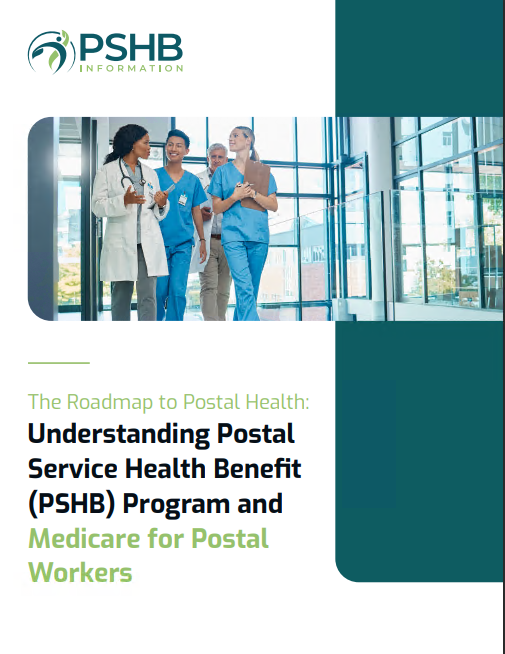Key Takeaways:
-
Medicare Part D now includes a $2,000 annual cap on out-of-pocket prescription drug costs, significantly reducing financial stress for those with high-priced medications.
-
The new Medicare Prescription Payment Plan allows you to spread drug costs over time, making expenses more manageable.
Understanding the Big Changes in Medicare Part D
If you’re a USPS worker or retiree relying on Medicare Part D, this year brings good news! New changes in 2025 are designed to reduce the financial burden of high-priced medications, giving you better control over your prescription costs. Let’s break down these updates and see how they work in your favor.
A Game-Changer: The $2,000 Annual Out-of-Pocket Cap
One of the most significant updates to Medicare Part D is the introduction of a $2,000 annual cap on out-of-pocket prescription drug costs. Prior to 2025, you might have faced unlimited expenses once you entered catastrophic coverage. Now, regardless of how much your medications cost, you won’t pay more than $2,000 out of pocket each year.
What This Means for You
-
Predictable Costs: No more surprise bills. You can plan for a maximum of $2,000 annually, making budgeting easier.
-
Relief for High Medication Costs: If you’re on expensive treatments, this cap is a lifeline that could save you thousands of dollars.
The cap applies to all enrollees, so whether you’re new to Medicare or a long-time beneficiary, you’ll benefit immediately.
Spreading the Cost: The Medicare Prescription Payment Plan
Another new feature for 2025 is the Medicare Prescription Payment Plan. This option lets you divide your out-of-pocket costs for prescription drugs into equal monthly payments throughout the year.
Why It’s Beneficial
-
Ease Financial Strain: Instead of paying large sums upfront, you can spread the cost over time.
-
Better Budget Management: Monthly installments make it simpler to balance your expenses alongside other financial obligations.
This is especially helpful if you’re managing multiple prescriptions or have a limited monthly income.
Improved Access and Transparency
In addition to reducing costs, Medicare Part D now emphasizes greater transparency and access to information. Changes in 2025 require plans to provide clearer details about costs and coverage.
How This Helps
-
Simplified Plan Comparisons: It’s easier to understand what you’re paying for and how different plans stack up.
-
Clearer Communication: You’ll get better insights into coverage changes through Annual Notice of Change (ANOC) letters and other updates.
This empowers you to make informed choices about your plan and ensure it meets your needs.
Timelines and Enrollment Periods
Understanding when you can make changes to your Medicare Part D plan is crucial. Here are the key enrollment periods for 2025:
Annual Open Enrollment
-
When: October 15 to December 7, 2025
-
What You Can Do: Review and switch plans if needed. Any changes take effect on January 1, 2026.
Special Enrollment Periods (SEP)
-
When: Throughout the year, based on qualifying events like moving or losing other coverage.
-
What You Can Do: Update or change your plan outside the standard enrollment window.
By staying informed about these timelines, you’ll never miss an opportunity to optimize your benefits.
Making the Most of Your Medicare Part D Plan
To get the full advantage of these 2025 changes, consider the following tips:
Stay Informed
Keep an eye on any communication from your Medicare Part D plan, including updates about costs, coverage, and benefits. Review your Annual Notice of Change (ANOC) letter carefully.
Evaluate Your Medications
Take stock of your current prescriptions and their costs. If you’re approaching the $2,000 out-of-pocket cap, consider spreading payments with the Medicare Prescription Payment Plan.
Compare Plans During Open Enrollment
Even with the new cap, different plans may offer varying costs and benefits. Use the annual Open Enrollment Period to explore options and find the best fit for your needs.
Coordinate with Medicare Part B
If you’re also enrolled in Medicare Part B, check how your drug coverage coordinates. This can help you reduce overall costs for both prescription and medical services.
Why These Changes Matter to USPS Workers and Retirees
As a USPS worker or retiree, you likely have unique healthcare needs, especially if you rely on consistent and affordable medication coverage. The 2025 Medicare Part D updates are tailored to alleviate financial stress and provide more control over your healthcare expenses.
Enhanced Affordability
With the new out-of-pocket cap and payment plan, you’re shielded from the unpredictable costs of high-priced medications.
Flexibility for Retirees
Retirees often face fixed incomes, making predictable expenses essential. These changes provide the financial stability you need to enjoy your retirement without worrying about sudden drug costs.
Take Control of Your Prescription Costs Today
The 2025 Medicare Part D changes offer significant cost-saving opportunities for USPS workers and retirees. By staying informed and proactive, you can take full advantage of these updates and ensure your prescription needs are met affordably.






